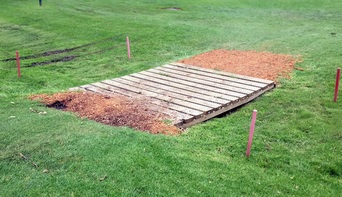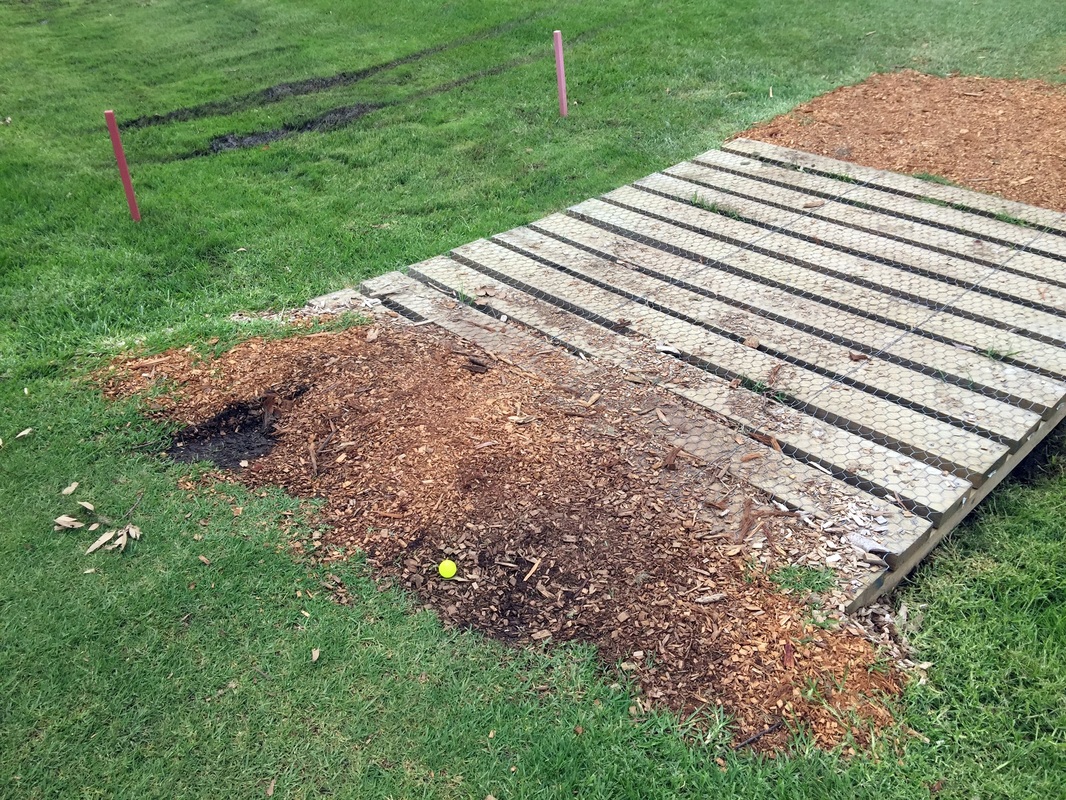
There is a water hazard on the 15th and in 2015 a wooden bridge was put over it so that players would not have to go through the hazard when it was wet and muddy. The stakes defining it as a water hazard have been placed along the hazard. The bridge is in the hazard in that it is not the subject of a local rule excluding or defining it not to be part of the hazard. (The masonry bridges on the course are the subject of a local rule and have been excluded from being in their respective hazards click here for that link). So all that means is if your ball is in the hazard including that area of the bridge it must be played from there or relief taken under rule 26-1. Note that the bridge is an immovable obstruction and that the stakes marking the hazard are also immovable obstructions, as defined by the local rules on the back of the card.
Here are a couple of pictures showing a couple of situations.
| Here the ball is in the hazard and may be played from the hazard or relief taken under Rule 26-1 at a cost of 1 stroke. | Here the ball is outside the hazard and lying on a path with an artificial surface of wood chips. Relief may be takes without penalty under Rule 24-2b From the Rules - Section - Definitions Obstructions An “obstruction’’ is anything artificial, including the artificial surfaces and sides of roads and paths and ...." Wood chips when applied to a path are also an artificial surface as dealt in decision 24/9 Decision 24/9 Artificially-Surfaced Road or Path Q.An artificially-surfaced road or path is an obstruction. What constitutes artificial surfacing? A.A road or path to which any foreign material, e.g., concrete, tar, gravel, wood chips, etc. has been applied is artificially surfaced and thus an obstruction. |
Please use the bridge if in motorised cart. KB




 RSS Feed
RSS Feed
